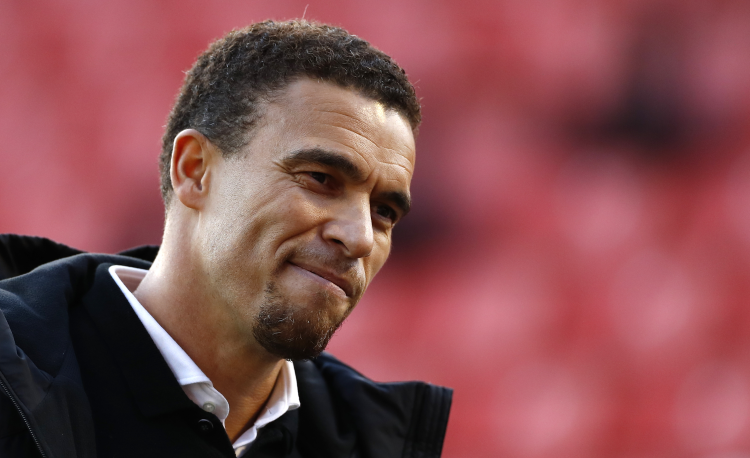




OUR BEST EVER OFFER - SAVE £100/$100
JOIN THE WORLD'S LEADING PROFESSIONAL DEVELOPMENT PROGRAMME
- 12 months membership of Elite Soccer
- Print copy of Elite Player & Coach Development
- Print copy of The Training Ground
You are viewing 1 of your 1 free articles
Counter-pressing
This session is all about counter-pressing and it encourages a high intensity style of play and instant reactions from the players.
| Area | Up to 30x12 yards |
| Equipment | Balls, bibs, cones, 2 goals |
| No. of Players | 21 players + 2 goalkeepers |
| Session Time | Practice 1: 4 mins Practice 2: 12 mins Practice 3: 12mins |
This session is all about counter-pressing and it encourages a high intensity style of play and instant reactions from the players.
An intensive session run in tight areas, it helps to work on quick decision-making. The players like it because it’s fast, encourages competitiveness and everyone is fully involved and engaged.
Depending on the periodisation, if we have no midweek game we would run a high intensity counter-pressing session like this on match day -4, because it utilises a small area and demands maximum effort in short blocks from the players.
We’ve also used small area sessions like these for players who need a top up. It’s adaptable to a small group of players, but you get the same output.
“The players like this session because it’s fast, encourages competitiveness and everyone is fully involved”
PRACTICE 1
We set up three identical playing areas of 20x20 yards. Each playing area has a diamond shape marked out by cones, as shown. We’re using 21 outfield players, who are split into three groups of seven and each group performs the same drill around their own diamond.
On each diamond, one player starts in the middle, and the remaining players are set up as shown - two cones have one player at each position and two cones have two players at each position.
One of the players in a group of two on the outside starts with the ball. They play the ball to the player in the middle and then follow the ball to press the player. The receiving player in the middle then passes to a player on the outside and follows the ball to press the player, as shown [1a].
[1a]
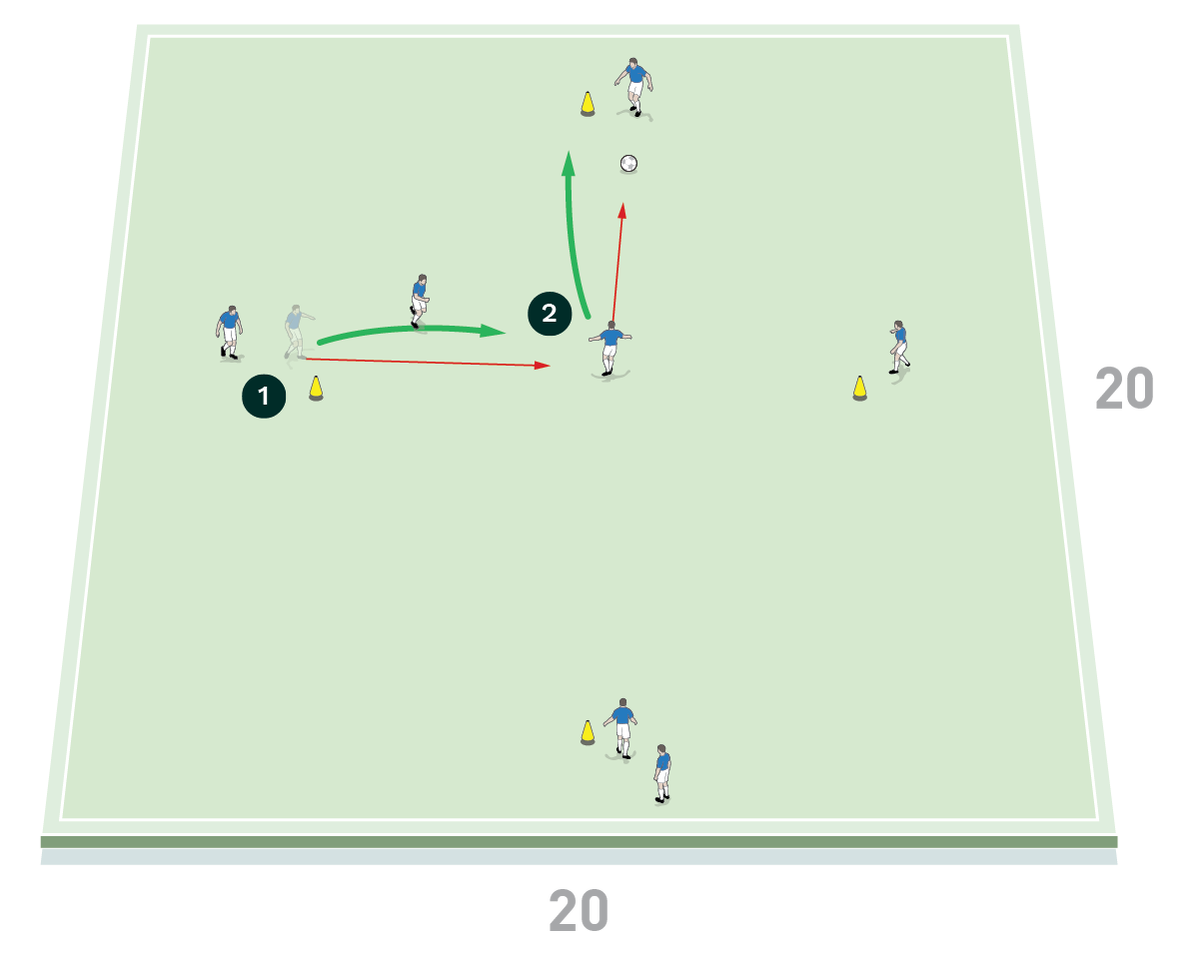
- One of the players in a group of two on the outside starts with the ball. This player passes to the player in the middle and follows the ball to press the player
- The receiving player in the middle passes the ball to a player on the outside and follows the ball to press the player
The receiving player passes the ball inside and then follows the ball to press the middle player. The middle player then receives and plays the ball to a player on the outside, following the ball to press the outside player, as shown [1b].
[1b]
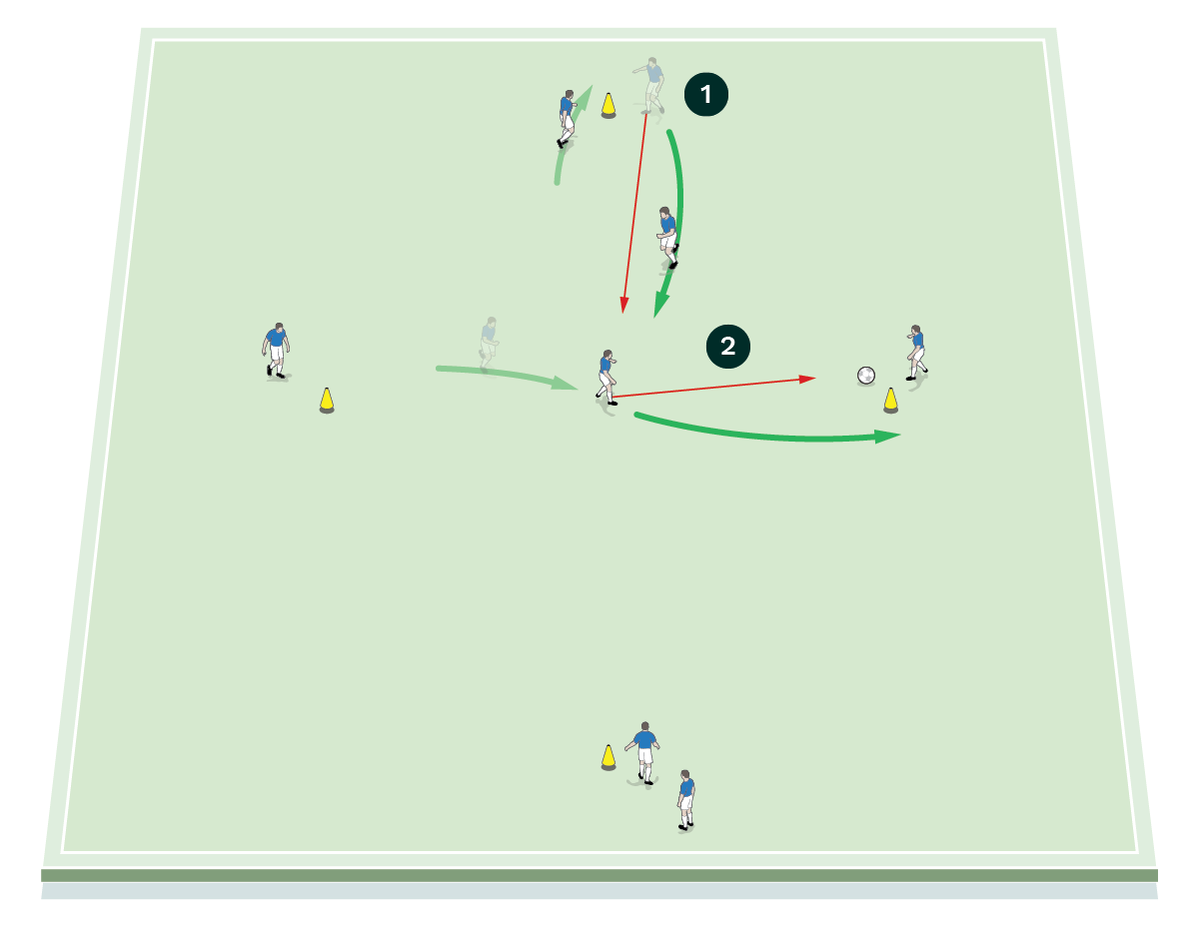
- The receiving player passes the ball inside and then follows the ball to press the middle player
- The middle player receives and plays the ball to a player on the outside, following the ball to press the outside player. The practice continues in this way
The practice continues in this way, with the ball being worked from inside to outside and back again.
“We want to see players using good touch under pressure. They should also receive well and press with intensity”
We play four one-minute blocks. We want to see players using good touch under pressure. They should also receive well and press with intensity.
PRACTICE 2
We set up a playing area of 30x12 yards with a two-yard zone across the middle. We’re using 21 outfield players split into three teams of seven. The blue team starts at one end and the reds start at the other, while the yellows start in the middle zone. The reds begin in possession of the ball and the yellow team sends three players in to red half to press and to try to win the ball back. The aim for the possession team is to string eight consecutive passes together before they can transfer the ball to the team at the other end, as shown [2a].
[2a]
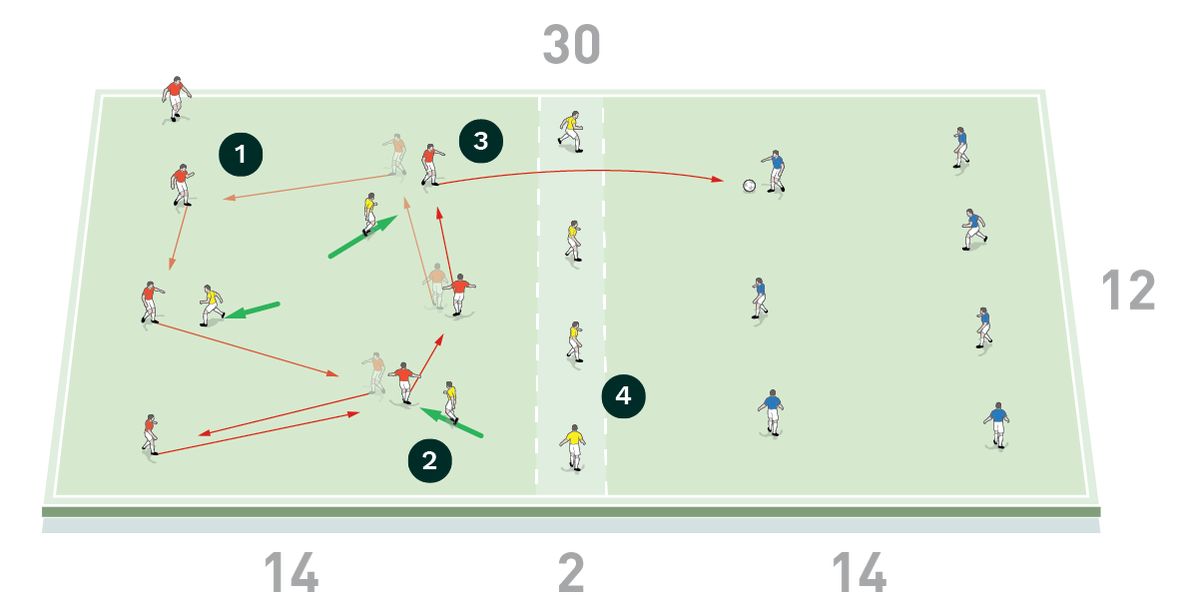
- The reds begin in possession of the ball
- The yellow team sends three players in to the red half to press and to try to win the ball back
- The aim for the red possession team is to string eight consecutive passes together before they can transfer the ball to the blue team at the other end
- The four yellows in the middle zone are not allowed to intercept the transfer of the ball from one end to the other
They are given two chances to achieve this before the coach resets and gives possession to the other team.
The yellows in the middle zone are not allowed to intercept the transfer of the ball from one end to the other. If the reds successfully transfer the ball to the other end, the three pressing yellows return to the middle zone and three other yellows are sent to press the blues, who are now the possession team, as shown [2b].
[2b]
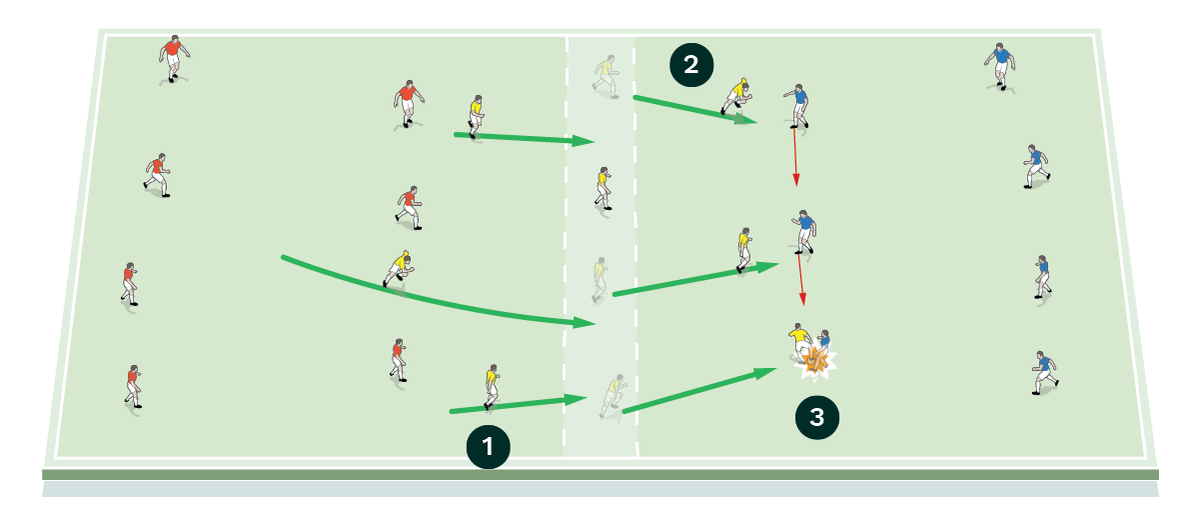
- If the reds successfully transfer the ball to the other end, the three pressing yellows return to the middle zone
- Three other yellows are sent to press the blues, who are now the possession team
- The blues aim to make eight passes but a yellow tackles the blue in possession and wins the ball
The blues must try to make eight consecutive passes before being allowed to transfer the ball back.
If one of the yellows wins possession of the ball from the blues, the yellows must transfer the ball to the red team, and then swap roles with the blues, who now become the defending team, as shown [2c].
[2c]

- If one of the yellows wins possession from the blues, the yellows must immediately transfer the ball to the red team
- The yellows then swap roles with the blues, who now become the defending team
We would play this for six minutes. Then we would progress the practice to allow the three middle players to try to intercept the transfer of the ball from end to end. We would play this for a further six minutes.
PRACTICE 3
We set up a playing area of 30x30 yards with a goal and a goalkeeper positioned on two sides. We’re using 16 outfield players split into two teams of eight. The teams form two queues each, with each team facing a different goal, as shown.
On the coach’s whistle, two players from each team run into the playing area. The reds have the ball and they are attacking the goal facing them while two of the blues enter the area to defend the goal, as shown [3a].
[3a]

- On the coach’s whistle, two reds run into the playing area to attack the goal facing them
- Two of the blues enter the area to defend the goal
Once the ball is dead, the two blue defenders leave the playing area but the two reds remain ready to defend against the two new blues who now enter the playing area with a ball ready to attack the goal facing them, as shown [3b].
[3b]

- Once the ball is dead, the two blue defenders leave the playing area
- The two reds remain in the playing area ready to defend against the two blues who now enter with a ball
- The two blues attack the goal facing them
Play continues in this way. At the end, the team that scored the least goals performs press-ups as a forfeit. We would play four three-minute blocks.
This practice would get players to quickly transition from attack to defence. We want to see players demonstrating quick reactions when transitioning. We also want to see effective emergency defending and a good sense of competition between the teams.
Related Files
Editor's Picks
Attacking transitions
Deep runs in the final third
Using the goalkeeper in build-up play
Intensive boxes drill with goals
Penetrating the final third
Creating and finishing
My philosophy
Pressing initiation
Compact team movement
Coaches' Testimonials

Alan Pardew

Arsène Wenger

Brendan Rodgers

Carlos Carvalhal

José Mourinho

Jürgen Klopp

Pep Guardiola

Roy Hodgson

Sir Alex Ferguson

Steven Gerrard
Related
Coaches' Testimonials

Gerald Kearney, Downtown Las Vegas Soccer Club

Paul Butler, Florida, USA

Rick Shields, Springboro, USA

Tony Green, Pierrefonds Titans, Quebec, Canada
Join the world's leading coaches and managers and discover for yourself one of the best kept secrets in coaching. No other training tool on the planet is written or read by the calibre of names you’ll find in Elite Soccer.
In a recent survey 92% of subscribers said Elite Soccer makes them more confident, 89% said it makes them a more effective coach and 91% said it makes them more inspired.
Get Monthly Inspiration
All the latest techniques and approaches
Since 2010 Elite Soccer has given subscribers exclusive insight into the training ground practices of the world’s best coaches. Published in partnership with the League Managers Association we have unparalleled access to the leading lights in the English leagues, as well as a host of international managers.
Elite Soccer exclusively features sessions written by the coaches themselves. There are no observed sessions and no sessions “in the style of”, just first-hand advice delivered direct to you from the coach.
